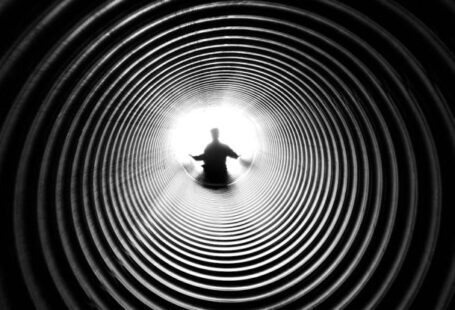Have you ever experienced a moment when you felt like you’ve been somewhere before or have already lived through a particular event? This strange sensation is known as deja vu, a French term that translates to “already seen.” While it may feel like a glitch in the matrix or a glimpse into an alternate reality, scientists have been studying this phenomenon for years to uncover its mysterious origins.
A Brief Introduction to Deja Vu
Deja vu is a psychological experience that occurs when an individual feels a strong sense of familiarity with a situation or place, despite knowing that it is impossible. It is often accompanied by a feeling of surprise or confusion, as the mind tries to reconcile the current experience with the feeling of having already lived it before. While it is a relatively common occurrence, experienced by approximately 60-70% of people at some point in their lives, the exact cause of deja vu remains unclear.
Theories and Explanations of Deja Vu
Scientists have proposed several theories to explain the occurrence of deja vu, each shedding light on different aspects of this strange phenomenon. Some of the most prominent theories include:
1. Dual Processing Theory: According to this theory, deja vu occurs when there is a mismatch between the conscious and unconscious processing of information in the brain. It suggests that the brain’s memory systems may momentarily overlap, leading to a sense of familiarity with a new experience.
2. Memory Retrieval Theory: This theory suggests that deja vu is a result of a memory retrieval error. It proposes that the brain mistakenly retrieves a memory from a similar but different context, creating a feeling of familiarity in the present moment.
3. Hologram Theory: This intriguing theory proposes that deja vu is a glimpse into parallel universes or alternate dimensions. It suggests that our consciousness may momentarily tap into information from another reality, leading to the feeling of having already experienced something.
4. Attentional Lapse Theory: According to this theory, deja vu occurs when there is a momentary lapse in attention. It suggests that the brain may briefly misfire, causing a sensation of familiarity with the current experience.
The Role of the Brain in Deja Vu
Studying the brain’s activity during deja vu experiences has provided valuable insights into understanding this phenomenon. Neuroimaging studies have shown that deja vu is associated with increased activity in the medial temporal lobe, a region of the brain involved in memory formation and retrieval. It is believed that the activation of this brain region during deja vu may contribute to the strong feeling of familiarity.
Real-Life Examples of Deja Vu
Deja vu experiences can vary in intensity and duration, ranging from fleeting moments to more prolonged episodes. Some individuals report experiencing deja vu during mundane activities, such as walking down a familiar street, while others describe more profound instances during significant events or conversations.
One such example is the case of a man who claimed to have predicted the exact outcome of a football game he was watching, despite having no prior knowledge of the match. He experienced a vivid sense of having seen the game before, down to the smallest details, leaving him puzzled and amazed.
In Conclusion
While deja vu continues to intrigue scientists and researchers, its true nature remains elusive. Theories and explanations abound, but no single explanation can account for all instances of this phenomenon. Whether it is a glitch in the matrix, a trick of the mind, or a glimpse into parallel dimensions, deja vu continues to captivate our imagination and challenge our understanding of consciousness and memory. So the next time you find yourself in the midst of a deja vu experience, embrace the mystery and enjoy the peculiar sensation of feeling like you’ve been there before.





